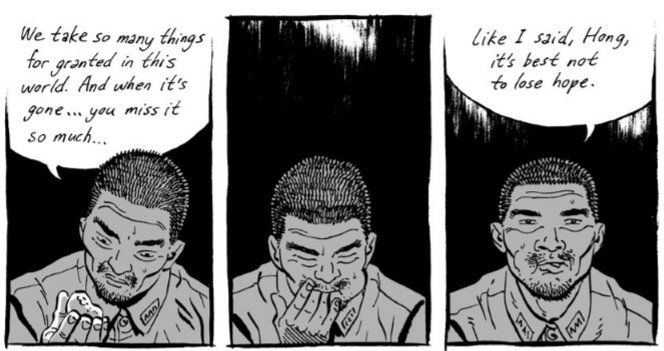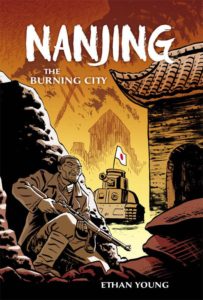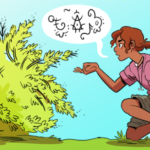
Nanjing: The Burning City
Writer & Artist: Ethan Young
Publisher: Dark Horse
A review by Amelia Wellman
 I love history. World War II has been a favourite topic of mine since listening to my grandfather’s stories about his time in the military as a kid. There came a point when I believed I had learned everything I could about World War II. Then I read a book in high school (that remains to this day my favourite book) called The Devil of Nanking that covered a part of the war I’d never heard about: The Nanjing Massacre.
I love history. World War II has been a favourite topic of mine since listening to my grandfather’s stories about his time in the military as a kid. There came a point when I believed I had learned everything I could about World War II. Then I read a book in high school (that remains to this day my favourite book) called The Devil of Nanking that covered a part of the war I’d never heard about: The Nanjing Massacre.
I’ve studied this little known massacre of World War II on and off again for years and just recently came upon a graphic novel that focuses on just a single day in the six weeks of chaos in 1937, when the Japanese took China’s capital city and proceeded to rape, kill, pillage, and burn it to the ground.
Nanjing: The Burning City tells the brutal tale of the Imperial Japanese Army seizing Nanjing. Through the dust of the bombed buildings, screams echo off the rubble. Two Chinese soldiers, abandoned by their cowardly commanding officers, are trapped inside the city. Hopelessly outnumbered and not even safe disguised as civilians, they plan their escape.
The story of Nanjing is a horrifying one. Bombs were dropped, crops and farms destroyed, the higher ranking army officers abandoned their troops to hide in the mountains. When the Japanese entered the city, they began a six week campaign of rape, looting, and murder. A few Westerners that were in the city set up a refugee zone but the civilians that stayed weren’t safe even there. Any man suspected of being in the military was killed, women were rounded up to serve in Japanese army brothels, and children used for target practice. Records are fuzzy, but it’s possible that up to 300,000 civilians were murdered and up to 80,000 women were raped.
Nanjing was an appalling event, but Young has produced a graphic novel without anything graphic having been shown. There’s no glorification of the violence that transpired present in these 200 hundred pages. It’s a bold move and an original one. Most media would choose to show the violence to hook the audience, but Young has shown no more than a shadow of the events. His story is strong enough to carry your attention from beginning to end without sensationalizing the violent events. It makes it so much more powerful by this design. The more you show, the more trivial everything becomes.
Young does this story a great justice by keeping it as scarce as possible in terms of what is seen in Nanjing: The Burning City. If too much death and destruction is shown it wears the audience down. If you become desensitised to one aspect of the story, you’re likely desensitised to them all. By shying away from the horrors, Young creates a story about Chinese honour and resilience. The captain’s speech at the end, while he has a gun pressed against his head, is inspiring.
The art of Nanjing: The Burning City is as striking as the story. It’s done in black and white with thick and simple pen lines. The artwork isn’t necessarily sparse, but it’s not necessarily detailed either. Clever use of shadows and angles always make expressions very clear and what little is shown of the landscape is oppressive and bleak. It’s detailed where it needs to be to create the astounding atmosphere that’s present. Having never read any other of Young’s work, I can’t say if it’s an overall style he has, but what’s presented in this graphic novel works exceedingly well with the story.
The Verdict
Buy It! Nanjing: The Burning City is a bold and haunting look at a segment of history that’s almost always completely overlooked. It’s a shocking bit of history told in a way that doesn’t highlight the atrocities. It highlights the enduring human spirit and how resilient we can be in the face of extreme circumstances. It’s a sad story but a story that needs to be told.


![[REVIEW] ‘HAWKEYE’ HITS THE BULLSEYE WIH ITS DEBUT ON DISNEY+](https://geekd-out.com/wp-content/uploads/2021/11/hawkeye-hailee-steinfeld-jeremy-renner-disney-150x150.jpg)
![[REVIEW] I AM IRON MAN #1](https://geekd-out.com/wp-content/uploads/2023/02/i-am-iron-man-feat-150x150.jpg)